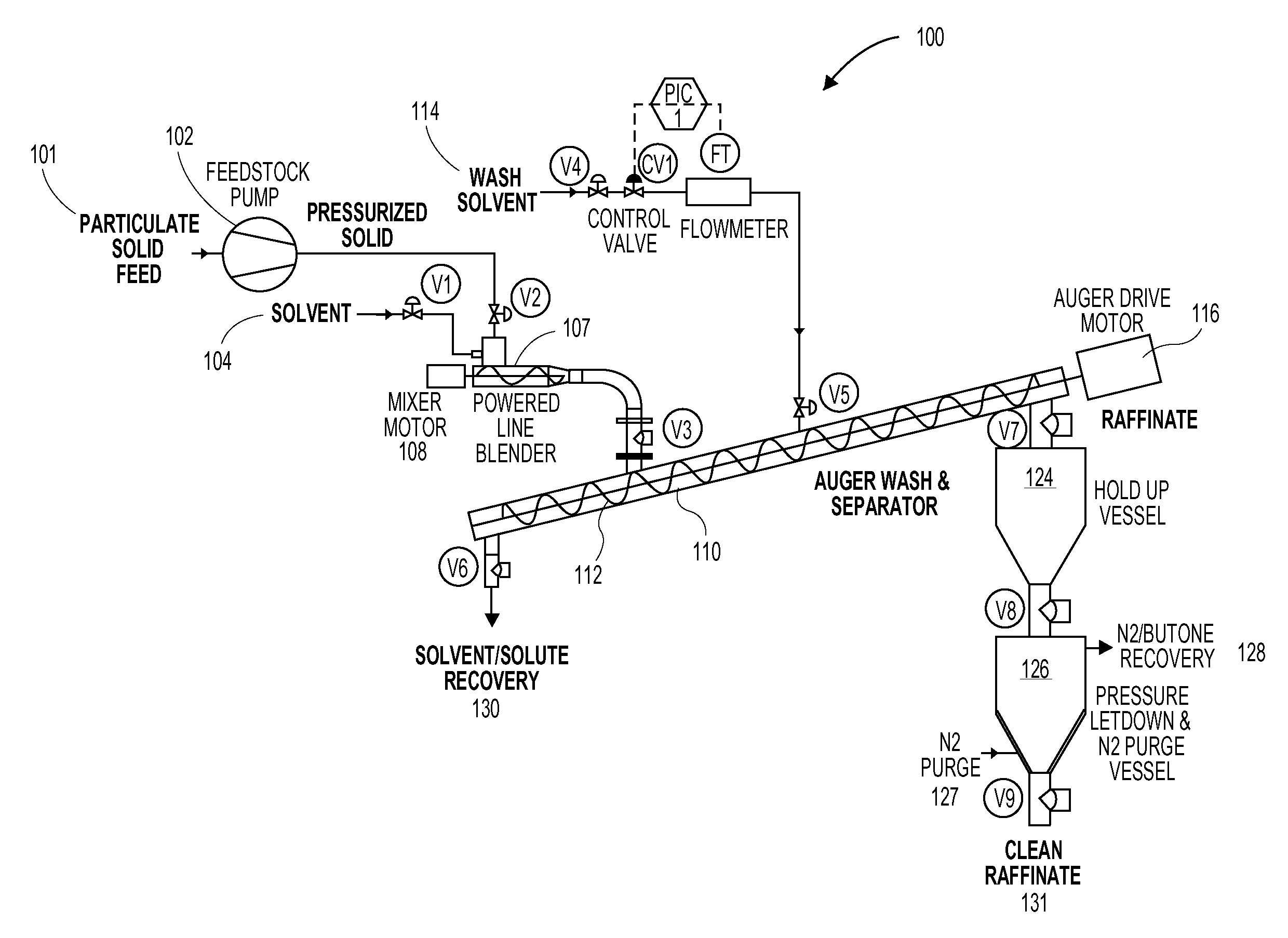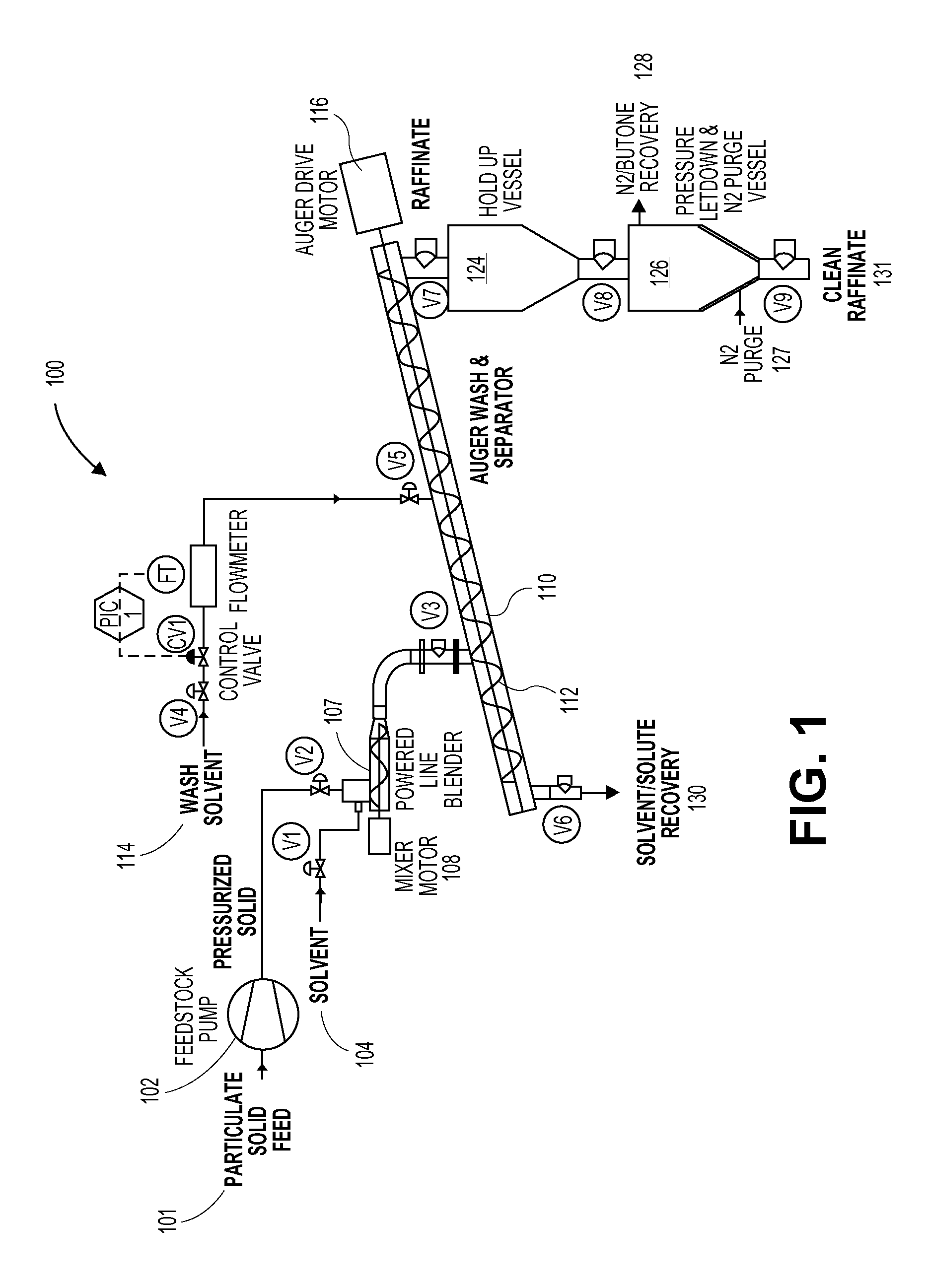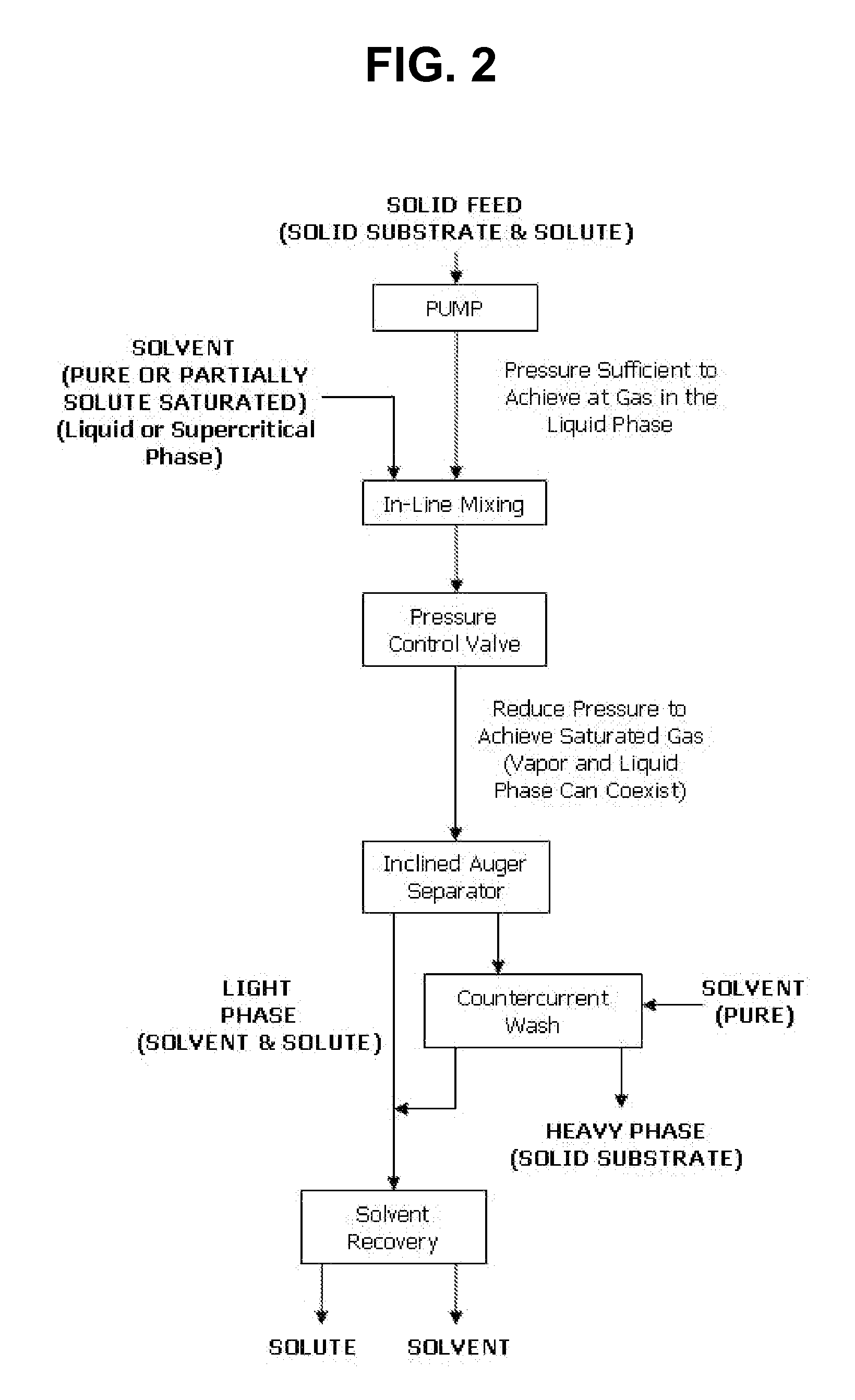Dense gas means for extraction of a solute from solids
a solute and solids technology, applied in the field of solids extraction, can solve the problems of inability to process continuously, inability to achieve continuous processing, so as to achieve the effect of removing the contamination of swar
- Summary
- Abstract
- Description
- Claims
- Application Information
AI Technical Summary
Benefits of technology
Problems solved by technology
Method used
Image
Examples
example 1
[0130]Drill cuttings with a median particle size of 250 microns are processed. Minimum particle size is submicron. Maximum particle size is 6 mm. This material is 21 wt % oil, 10 wt % water, and the balance sandstone and barite solids. The solvent gas is liquid butane with a nominal system pressure of 2.4 bar. The experiment is run at room temperature conditions nominally on the range from 23° C. to 34° C.
[0131]Solid slurry is diluted with 10 W-40 lubricating oil with a ratio of 0.25:1 wt oil:wt drill cuttings to decrease the viscosity of the drill cuttings and facilitate pumping. Material is pumped at a mean rate of 250 g / min. Butane liquid is introduced into the mixer at a rate of 200 g / min.
[0132]This solvent gas diluted slurry mixture is introduced into the inclined auger. The auger rotation is 25 RPM. Wash butane is introduced into the auger at a rate of 50 g / min.
[0133]The solvent gas and solute mixture and fines with diameter less than 50 micron are washed...
example 2
[0134]Metal debris from a metalworking operation (swarf) is obtained from a local machine shop. This material has been drained through a sieve. Oil content in the material is known via combustion of oil and gravimetric measurement to be 29 wt % of the feed material. Solids are known to be as large as 6 mm wide and 500 micron thick and as small as 1 mm wide and 200 micron thick. The solvent gas is liquid butane with a nominal system pressure of 2.4 bar. The experiment is run at room temperature conditions nominally on the range from 23° C. to 34° C.
[0135]Solid slurry is diluted with 10 W-40 motor oil with a ratio of 0.25:1 wt oil:wt swarf to facilitate stuffing of the feed material into the hose pump. Material is pumped at a mean rate of 400 g / min. Butane liquid is introduced into the mixer at a rate of 300 g / min.
[0136]This solvent gas diluted mixture is introduced into the inclined auger. The auger rotation is 35 RPM. Wash butane is introduced into the auger at a rate of 100 g / ...
example 3
[0138]Flaked canola (rapeseed) with a nominal diameter of 2 mm and a thickness of approximately 200 micron is used as feed material. Material is sifted through a US Sieve Size No. 100 (149 micron opening). The overflow from this sifting operation is used in the test. Based on an AOCS test method, this material has an oil content of 45 wt %. The balance of the material is fiber, sugars, and water. The solvent gas is liquid butane with a nominal system pressure of 2.4 bar. The experiment is run at room temperature conditions nominally on the range from 23° C. to 34° C.
[0139]Solid slurry is diluted with canola oil with a ratio of 0.1:1 wt oil:wt canola flake to facilitate stuffing of the feed material into the hose pump. Material is pumped at a mean rate of 100 g / min. Butane liquid is introduced into the mixer at a rate of 75 g / min.
[0140]This solvent gas diluted mixture is introduced into the inclined auger. The auger rotation is 30 RPM. Wash butane is introduced into the auger a...
PUM
| Property | Measurement | Unit |
|---|---|---|
| angle of inclination | aaaaa | aaaaa |
| angle | aaaaa | aaaaa |
| angle | aaaaa | aaaaa |
Abstract
Description
Claims
Application Information
 Login to View More
Login to View More - R&D
- Intellectual Property
- Life Sciences
- Materials
- Tech Scout
- Unparalleled Data Quality
- Higher Quality Content
- 60% Fewer Hallucinations
Browse by: Latest US Patents, China's latest patents, Technical Efficacy Thesaurus, Application Domain, Technology Topic, Popular Technical Reports.
© 2025 PatSnap. All rights reserved.Legal|Privacy policy|Modern Slavery Act Transparency Statement|Sitemap|About US| Contact US: help@patsnap.com



